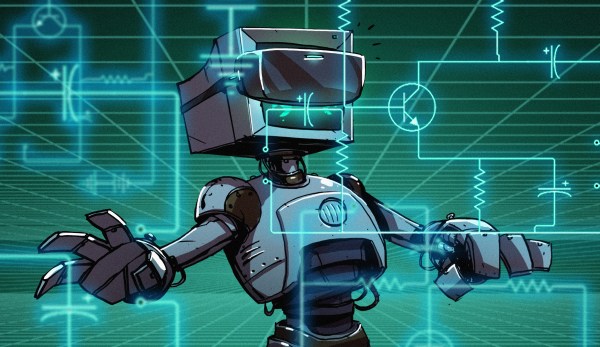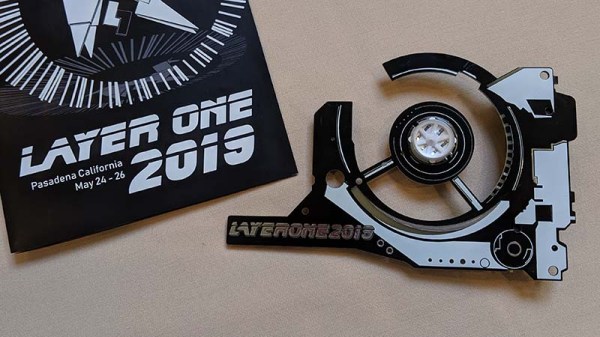In several decades of hanging around people who make things, one meets a lot of people fascinated by locks, lock picking, and locksport. It’s interesting to be sure, but it had never gripped me until an evening in MK Makerspace when a fellow member had brought in his lockpicking box with its selection of locks, padlocks, and tools. I was shown the basics of opening cheap — read easy from that— padlocks, and though I wasn’t hooked for life I found it to be a fascinating experience. Discussing it the next day a friend remarked that it was an essential skill they’d taught their 12-year-old, which left me wondering, just what skills would you give to a 12-year-old? Continue reading “Ask Hackaday: What Skills Would You Give A Twelve Year Old?”
Hackaday Columns4567 Articles
This excellent content from the Hackaday writing crew highlights recurring topics and popular series like Linux-Fu, 3D-Printering, Hackaday Links, This Week in Security, Inputs of Interest, Profiles in Science, Retrotechtacular, Ask Hackaday, Teardowns, Reviews, and many more.
Hackaday Podcast 022: King Of Power Banks, Great SDR Hacks, Sand Reflow, And Rat Rod Mower
Elliot Williams and Mike Szczys dig through the most interesting hacks from the past week. On this episode we take a look at a portable power bank build that defies belief. We discuss an all-in-one SDR portable, messing with restaurant pagers, and the software that’s common to both of these pursuits. There’s a hopping robot that is one heck of a PID challenge, and another robot that does nothing but stare you down. We bring it on home with great articles on pianos with floppy disks, and that satellite cluster you should be watching for in the night sky.
Take a look at the links below if you want to follow along, and as always tell us what you think about this episode in the comments!
Take a look at the links below if you want to follow along, and as always, tell us what you think about this episode in the comments!
Direct download (60 MB or so.)
This Week In Security: Nvidia, Ransomware Retirement, And A TOCTOU Bug In Docker
Nvidia’s GeForce Experience (GFE) is the companion application for the Nvidia drivers, keeping said drivers up to date, as well as adding features around live streaming and media capture. The application runs as two parts, a GUI, and a system service, using an HTTP API to communicate. [David Yesland] from Rhino Security Labs decided to look into this API, searching for interesting, undocumented behavior, and shared the results on Sunday the 2nd.
The first interesting finding was that the service was written in Javascript and run using Node.js. Javascript is a scripting language, not a compiled language — the source code of the service was open for studying. This led to the revelation that API requests would be accepted from any origin, so long as the request included the proper security token. The application includes an update mechanism, which allows an authorized API call to execute an arbitrary system command. So long as the authentication token isn’t leaked to an attacker, this still isn’t a problem, right? Continue reading “This Week In Security: Nvidia, Ransomware Retirement, And A TOCTOU Bug In Docker”
The Atomic Pi: Is It Worth It?
Several months ago, a strange Kickstarter project from ‘Team IoT’ appeared that seemed too good to be true. The Atomic Pi was billed as a high-power alternative to the Raspberry Pi, and the specs are amazing. For thirty five American buckaroos, you get a single board computer with an Intel processor. You get 16 Gigs of eMMC Flash, more than enough for a basic Linux system and even a cut-down version of Windows 10. You have WiFi, you have Bluetooth, you have a real time clock, something so many of the other single board computers forget. The best part? It’s only thirty five dollars.
Naturally, people lost their minds. There are many challengers to the Raspberry Pi, but nothing so far can beat the Pi on both price and performance. Could the Atomic Pi be the single board computer that finally brings the folks from Cambridge to their knees? Is this the computer that will revolutionize STEM education, get on a postage stamp, and sell tens of millions of units?
No. The answer is no. While I’m not allowed to call the Atomic Pi “literal garbage” because our editors insist on the technicality that it’s “surplus” because they were purchased before they hit the trash cans, there will be no community built around this thirty five dollar single board computer. This is a piece of electronic flotsam that will go down in history right next to the Ouya console. There will be no new Atomic Pis made, and I highly doubt there will ever be any software updates. Come throw your money away on silicon, fiberglass and metal detritus! Or maybe you have a use for this thing. Meet the Atomic Pi!
Circuit VR: Resistance Measurement With Four Wires
If you want to measure resistance and you know Ohm’s law, it seems like you have an easy answer, right? Feed a known current through the thing you want to measure and read the voltage required. A little math, and that’s it. Or is it? If you are measuring reasonably large resistance and you don’t mind small inaccuracies, sure. But for tiny measurements or highly accurate measurements, you’d be better off using the four-wire method. What’s more is, understanding why you want to use the four-wire method is a great example of using an understanding of electronics to find solutions to problems.
Continue reading “Circuit VR: Resistance Measurement With Four Wires”
Hunting Replicants With The 2019 LayerOne Badge
Blade Runner showed us a dystopian megatropolis vision of Los Angeles in the far-off future. What was a distant dream for the 1982 theater-goes (2019) is now our everyday. We know Los Angeles is not perpetually overcast, flying cars are not cruising those skies, and replicants are not hiding among the population. Or… are they?
The LayerOne conference takes place in greater Los Angeles and this year it adopted a Blade Runner theme in honor of that landmark film. My favorite part of the theme was the conference badge modeled after a Voight-Kampff machine. These were used in the film to distinguish replicants from humans, and that’s exactly what this badge does too. In the movies, replicants are tested by asking questions and monitoring their eyes for a reaction — this badge has an optional eye-recognition camera to deliver this effect. Let’s take a look!
Continue reading “Hunting Replicants With The 2019 LayerOne Badge”
Disrupting Cell Biology Hack Chat With Incuvers
Join us on Wednesday 5 June 2019 at noon Pacific for the Disrupting Cell Biology Hack Chat with Incuvers!
 A lot of today’s most successful tech companies have creation myths that include a garage in some suburban neighborhood where all the magic happened. Whether there was literally a garage is not the point; the fact that modest beginnings can lead to big things is. For medical instrument concern Incuvers, the garage was actually a biology lab at the University of Ottawa, and what became the company’s first product started as a simple incubator project consisting of a Styrofoam cooler, a space blanket, and a Soda Stream CO2 cylinder controlled by an Arduino.
A lot of today’s most successful tech companies have creation myths that include a garage in some suburban neighborhood where all the magic happened. Whether there was literally a garage is not the point; the fact that modest beginnings can lead to big things is. For medical instrument concern Incuvers, the garage was actually a biology lab at the University of Ottawa, and what became the company’s first product started as a simple incubator project consisting of a Styrofoam cooler, a space blanket, and a Soda Stream CO2 cylinder controlled by an Arduino.
From that humble prototype sprang more refined designs that eventually became marketable products, setting the fledgling company on a course to make a huge impact on the field of cell biology with innovative incubators, including one that can image cell growth in real time. What it takes to go from prototype to product has been a common theme in this year’s Hack Chats, and Noah, Sebastian, and David from Incuvers will drop by Wednesday to talk about that and more.
 Our Hack Chats are live community events in the Hackaday.io Hack Chat group messaging. This week we’ll be sitting down on Wednesday June 5 at 12:00 PM Pacific time. If time zones have got you down, we have a handy time zone converter.
Our Hack Chats are live community events in the Hackaday.io Hack Chat group messaging. This week we’ll be sitting down on Wednesday June 5 at 12:00 PM Pacific time. If time zones have got you down, we have a handy time zone converter.
Click that speech bubble to the right, and you’ll be taken directly to the Hack Chat group on Hackaday.io. You don’t have to wait until Wednesday; join whenever you want and you can see what the community is talking about.

















